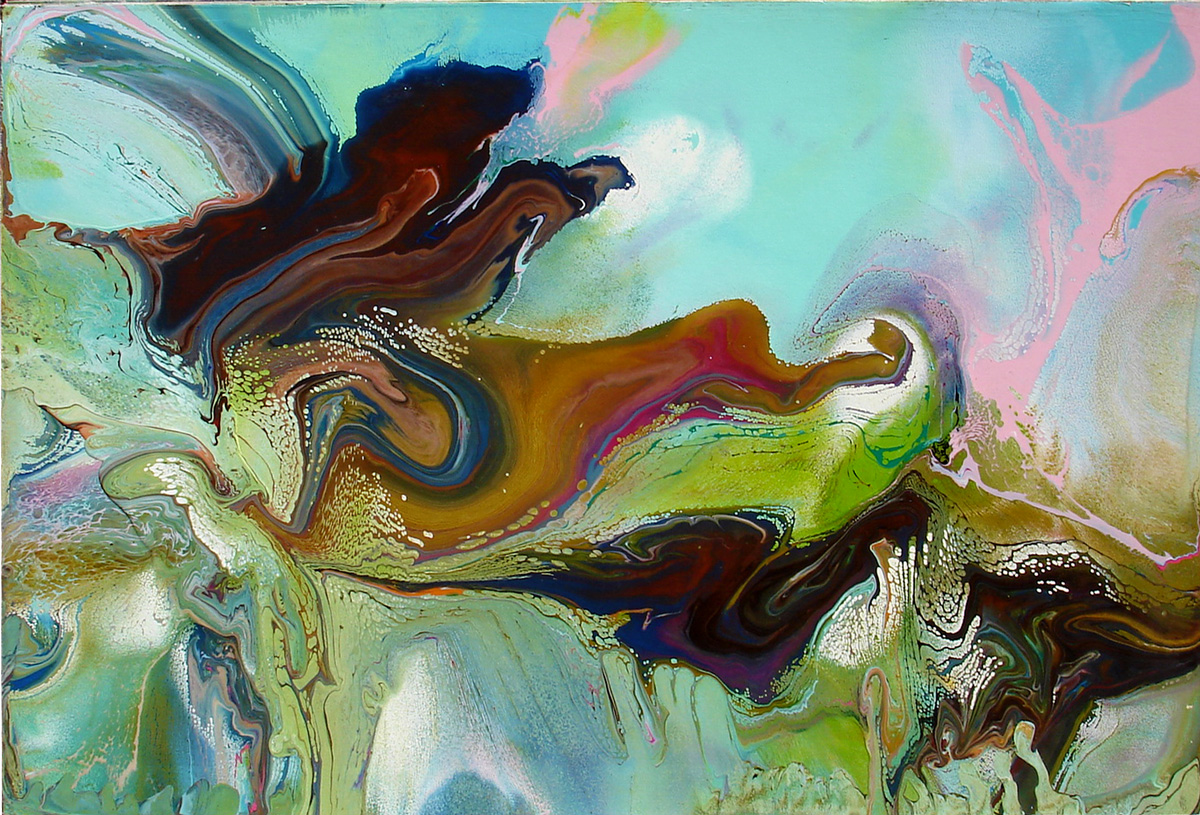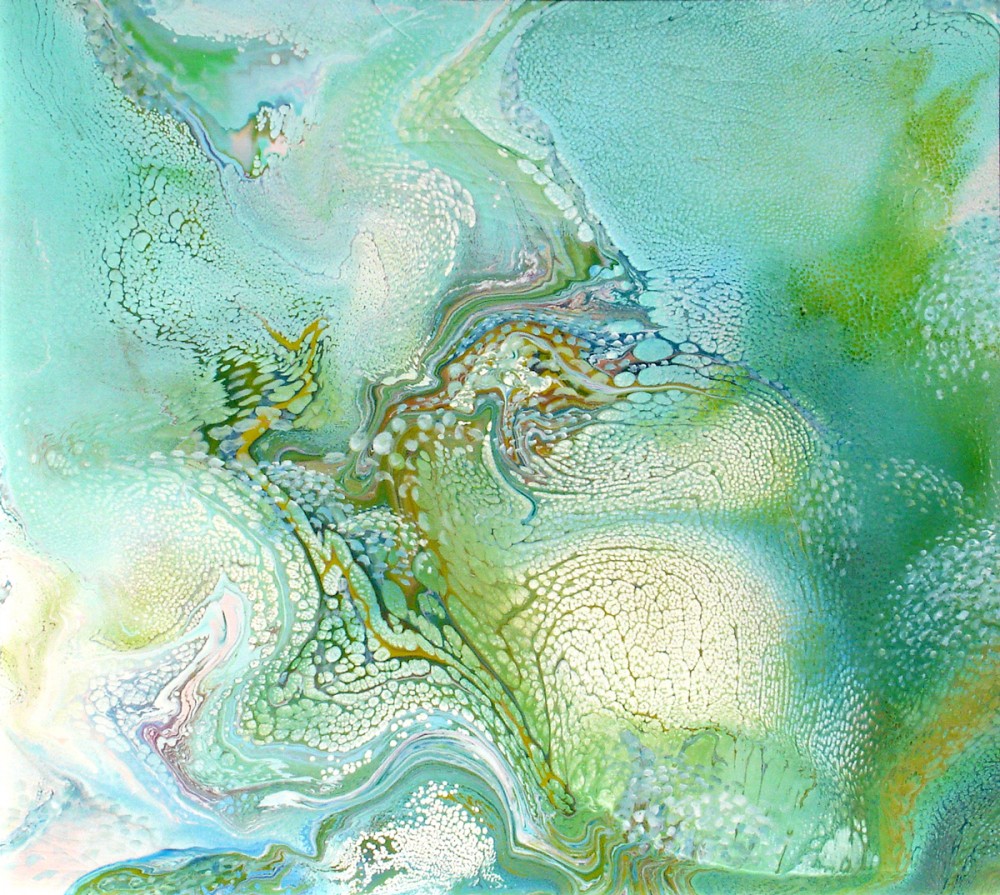
Category: ’60’s Abstracts
In this gallery are remnants of the ’60’s. When I arrived in San Francisco in early 1969 the sixties was in full bloom. These paintings are the footprints of my own journey through that era.
My first job in San Francisco was with a sign and poster company in which one my duties was matching colors for silk screen posters. While dripping one color paint into another I noticed that different colors made interesting reactions. Some drips became squirrelly lines; others expanded in bubble patterns. They looked much like what the light show artists were doing at the Grateful Dead concerts at Winterland. For me to make a painting, the problem was to get the wet stuff to dry on a flat surface. In the end I used the sun as an ultimate drier. None of these paintings are completely random. All of them took compositional planning and a little luck. The medium I used is what we were using in the poster industry — screen process ink (better than Pollock’s house paint) with xylene as a thinning agent. I spent hours in between paintings mixing colors and thinning each one so every color had thick (stay put) or liquid properties.
Even though I experimented with many materials – wood, canvas and plastic – to paint on, I found the best of my light show paintings were done on regular illustration board used in the poster industry. At the time I was not sure how these works would age. I have found that aside from myriad tiny cracks, the paintings still look fresh and new after 40 years.
Taking a cue from Pollock, Sam Francis and Paul Jenkins, it was all action painting in the beginning of each work. I started by bending up an inch on each side of the illustration board and taping the corners to keep the paint in. Then after an hour or so of mixing paint in many colors and densities in dozens of cans, I would start to drip and pour slowly similar to Jackson Pollock. However, I continued to add lots more liquid paint, until it sometimes was a quarter inch deep or more. Then I had a way of sliding the whole painting outside into direct sunlight and the paint went wild with activity from the heat and sun. The action painting now turned into watching and controlling flows with wands and shims. What to save, what to lose – like any painting. This process took most of the day and sometimes into the next.
Early success included awards in San Francisco and Sausalito Art Festival in 1973 and shows at Rose-Bernardi Gallery in Sausalito, Lyon Gallery in San Francisco, critiqued shows in Mill Valley and San Francisco, which offered helpful encouragement. Many of my paintings were soon being distributed nationally through J. Doyle Gallery in Chicago.
I enjoyed several years of modest success (which was fine) until I had to learn that age-old lesson that so many other artists have before. I became very over-extended with dozens of paintings on loan to the gallery and the gallery became overextended, and eventually went under, leaving me and several other artists with non-payment for a serious amount of work. It took a long time to recover and by the late 70’s my interest in drip painting waned as well as my interest in showing this style of painting. I thought way back then if I could still view these paintings in 30 years and they were still good, I would maybe show them again. For me they are still the best 60’s paintings I did, and also they still say 60’s better than most things being shown now.


Tango
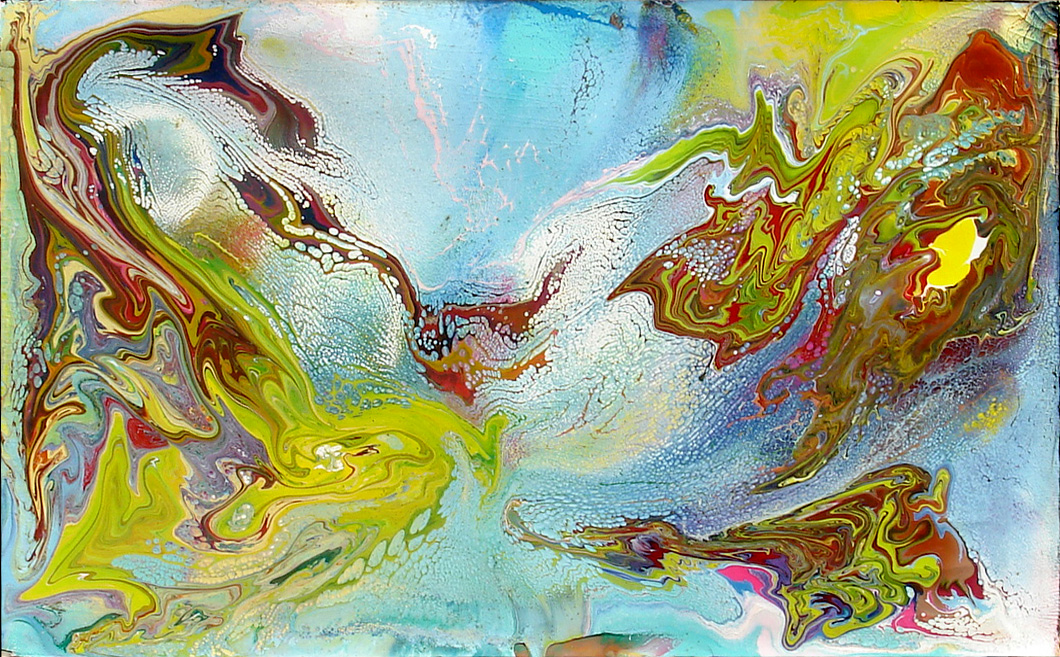
Tandem
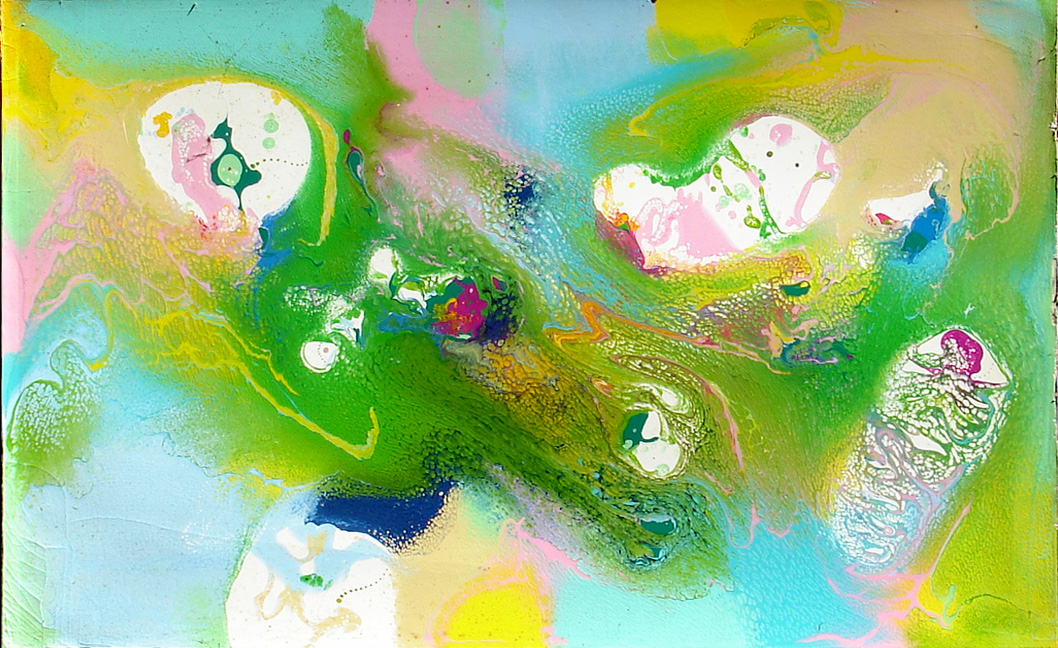
Pink Lady
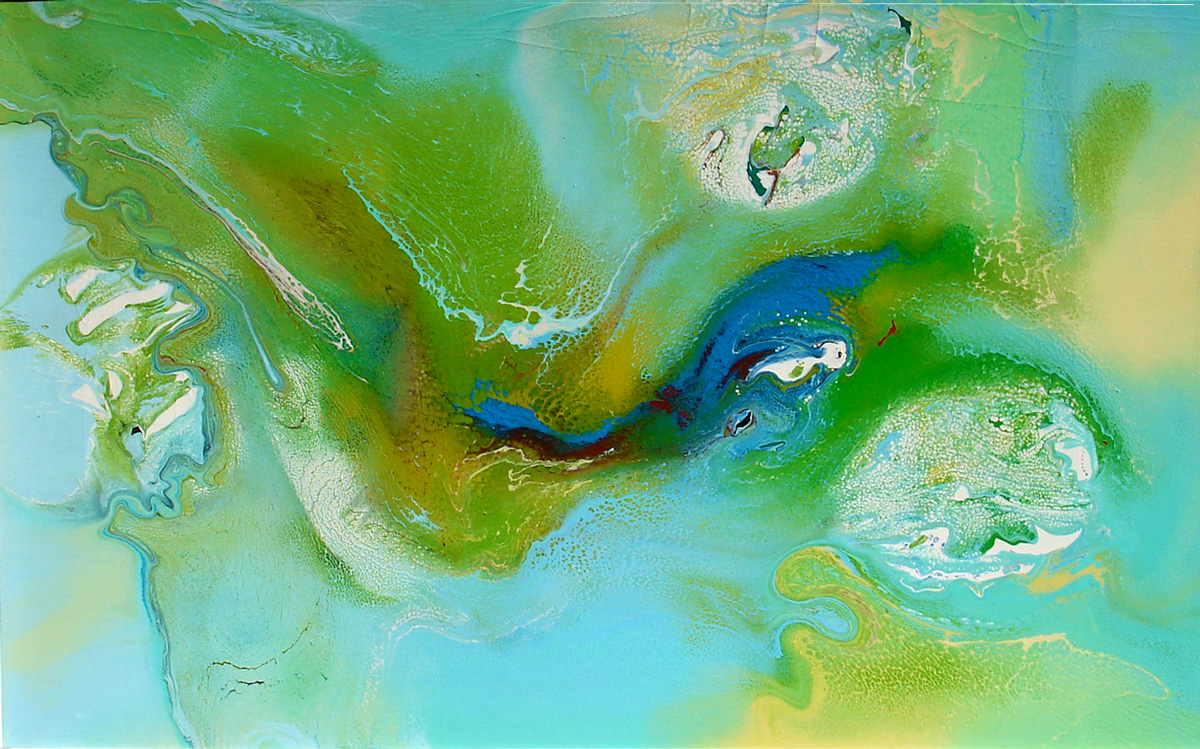
Pasture
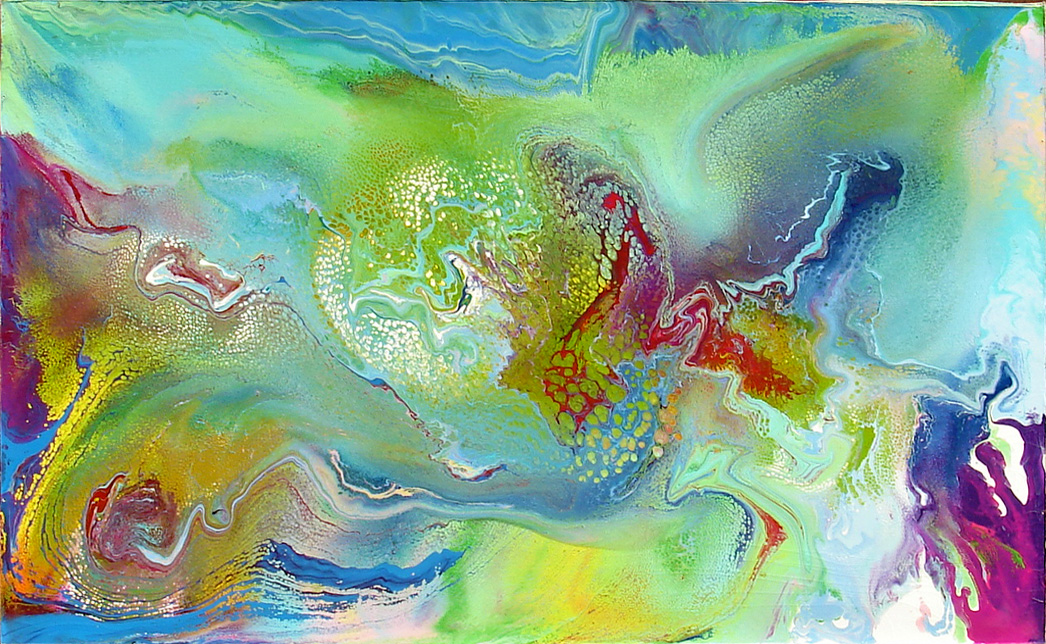
Gabriel’s View

Kelp
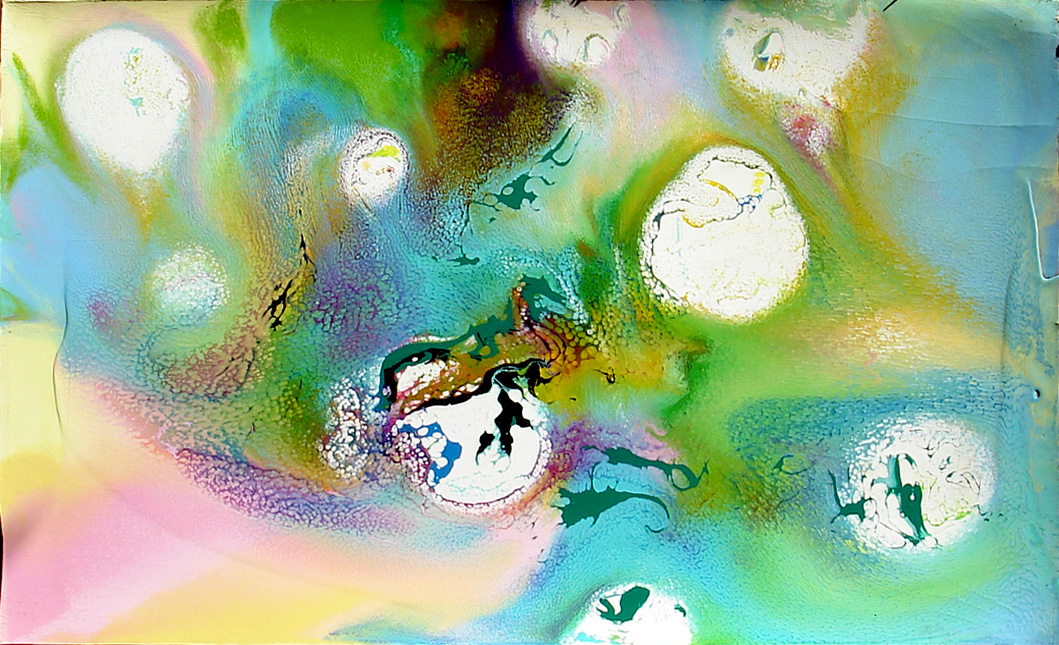
Jelly Ball
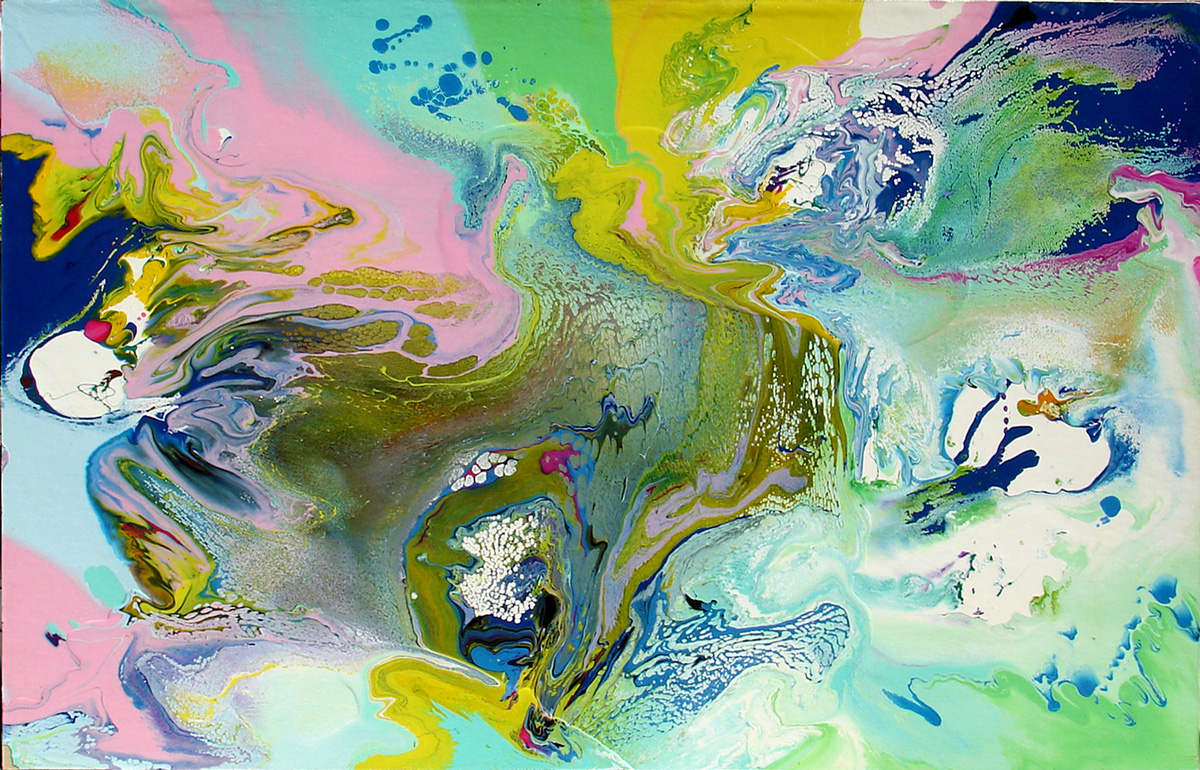
Half and Full
